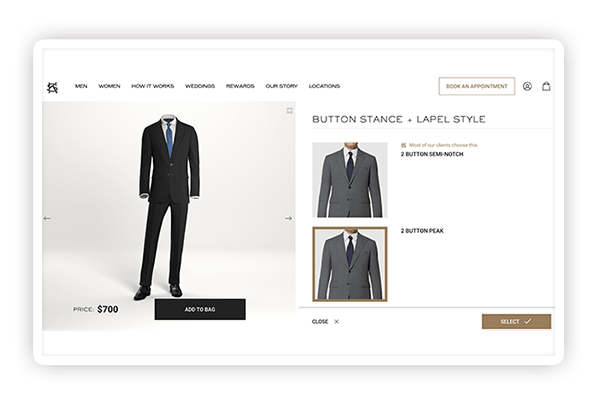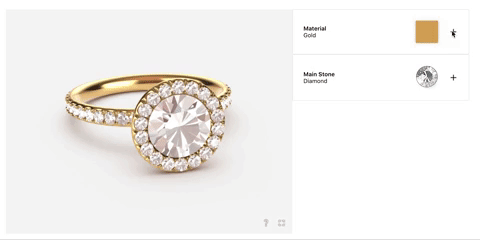Visual Commerce for Custom Suits
Visual commerce for custom suits has revolutionized the online apparel industry, offering shoppers the ability to customize and visualize their perfect suit. In this article, we explore the impact of 3D configurators, how customization boosts sales, and the use of augmented reality for product visualization in the apparel industry.
Key Takeaways
- Providing immersive, high-quality visuals and product customization educates and empowers shoppers, boosting buyer confidence and encouraging repeat business.
- Visual commerce tools can be used in brick-and-mortar stores as well, supporting suit businesses of any size.
- These tools streamline production and reduce time-to-market through automated order processing, seamless software and ecommerce platform integration and user-friendly digital asset management tools.
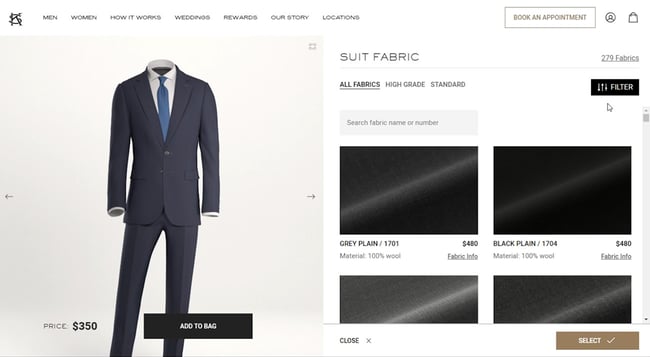
Boosting Shopper Confidence
Showing the Right Way to Measure for Fit
Experts agree that men should own at least one suit, and it should fit them well. For in-store suit shopping, a tailor can take measurements and make alterations. But how can an online apparel retailer make shoppers feel comfortable enough to purchase such an important piece of apparel?
Digital learning studies have found that people learn best when visuals coincide with text. In fact, studies have shown that shoppers retain only 10% of text presented to them, but 60% of visuals. Visuals provide a powerful key to helping turn shoppers into buyers.
By combining quality 3D visuals with accurate and concise directions, retailers can show shoppers how to find the exact measurements they need for a suit that will fit them perfectly. This supportive, interactive feature boosts customer engagement and trust in the brand.

Presenting Fit Options
Suits come in a wide variety of fit styles and configurations, which can present an overwhelming amount of information to shoppers and lead to cart abandonment.
With 3D renderings, suit sellers can show an accurate example of how a suit in the shopper's size will look in each style. Rather than putting the burden of knowledge on the shopper, retailers can subtly educate through the power of visuals.
Even better, interactive 3D visuals allow the consumer to zoom in on suit details, rotate the product for a 360° view and "explode" the outfit to see each of its included items—trousers, vest, tie and jacket. This provides upselling and cross-selling opportunities for the business as well as helping the customer focus on their style.
Businesses can also give their customers an augmented reality (AR) option, overlaying a chosen digital rendering of a suit onto the customer's body via their smartphone camera. This engaging experience allows the shopper to virtually try on the suit, increasing their confidence in the product.
A user-friendly, intuitive ecommerce storefront combined with a cutting-edge visual engine gives the online shopper an easier shopping experience than in-store.
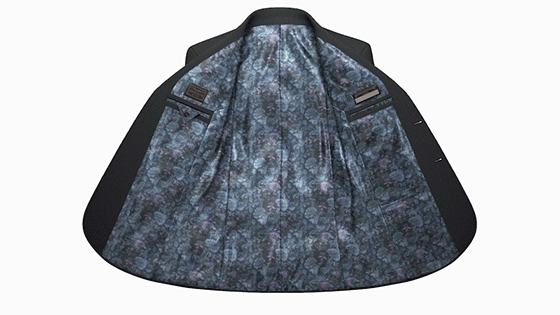
Empowering Shoppers to Make it Perfect
With size and style chosen, online retailers can offer a product configurator that enables shoppers to personalize their suit. This can include anything from customizing the jacket lining to changing the fabric, lapel type, button style and more.
By enabling shoppers to customize their suit and make it uniquely theirs, businesses create a value-add that turns browsers into buyers. According to a survey by Epsilon, 80% of consumers are more likely to make a purchase from a brand that provides personalized experiences.
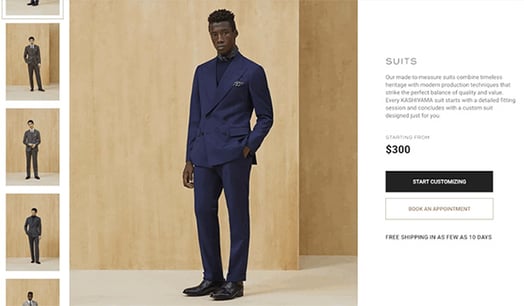
Saving Money on Production
No Need for Photo Shoots
Using virtual photography, online merchants can display multiple 3D products from a single image, reducing the time and cost of delivering custom product images. In fact, Threekit's Virtual Photographer is 24x faster than traditional product photography and at 1/1,000 the cost.
This scalable feature allows customers to switch, combine and create their custom suit in real-time with amazing realism.
With it, retailers can create thousands of aesthetically pleasing images per product, supporting brand storytelling as well as beautiful marketing products. And new products can be added to the catalog as soon as they're produced, with image renderings that match the established brand style.
It can even elevate a business' brick-and-mortar store, like Kashiyama discovered, by empowering sales personnel to show photorealistic digital swatches of materials and design options to in-store shoppers.

Removing Stock and Return Costs
With agile product configuration options, businesses have no need to produce and stock variations of each product. Suits can be made to order, removing all the costs associated with warehousing.
Visualization options align customer expectations, reducing the rate of product returns due to dissatisfaction with the suit design or fit. This not only reduces the shipping, storage and resale costs associated with returns, it's more environmentally sustainable.
Reducing Human Error
To reduce human error, and therefore the likelihood of sending the wrong item or fit and damaging customer relationships, the 3D product customizer has an automatic order function.
Once the buyer completes their purchase, the order is automatically sent to production with all the included details. The cut pattern, assembly instructions and bill-of-materials are also automatically sent, so sewing can begin immediately.
Faster and more accurate fulfillment not only increases customer satisfaction and loyalty, it reduces the need for intermediary human resources or a large digital sales and support group.
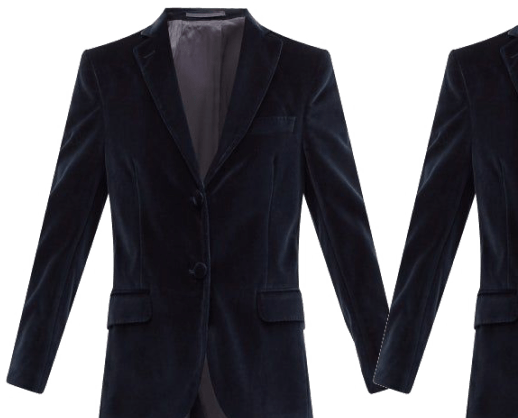
Streamlining Business Operations
Shortening Product Cycles
Offering product customization enables businesses to capture user preferences. These can be analyzed to identify market trends, shortening the time-to-market for new products and reducing development and product setup costs.
Additionally, data trends can be rendered through AI to provide individualized recommendations to returning shoppers. With 56% of online shoppers more likely to return to a website that offers relevant personalized recommendations, it's a huge way to capture repeat business and build brand advocates.
Managing Reusable Digital Assets
In addition, a robust 3D asset management library that stores product data as individual models, materials and textures enables wide-scale repurposing for consistent branding. Create it once, access it with ease and use it again and again.
Connecting it to a product catalog provides the flexibility to quickly update products when materials are out of stock or a new option is developed.

Supporting Existing Tools and Workflows
It's essential for online retailers to have apps and platforms that work together without the need to download space-hogging products that fail to deliver the features needed. Incorporating multiple different products to provide visual commerce tools can make an ecommerce platform complex and unwieldy, driving away consumers and requiring more IT personnel to manage.
The ability to utilize all the visual commerce benefits from a single flexible format that plugs into most ecommerce platforms, such as Shopify, Magento, Salesforce, BigCommerce and SAP means not having to wait for developers to catch up with front-end changes.
Additionally, with smooth integration into PIM, DAM, ERP, ECM and other business management software, Threekit empowers employees across all areas of the business to collaborate on product innovation and business growth.

With the right visual commerce technology, ecommerce merchants can deliver exceptional customer experiences that instill confidence in their online purchases. Adding functionality such as AR and virtual photography can provide a competitive advantage over sites that use older technology.
Schedule a demo today to see how Threekit can help your suit business dominate the ecommerce revolution.

